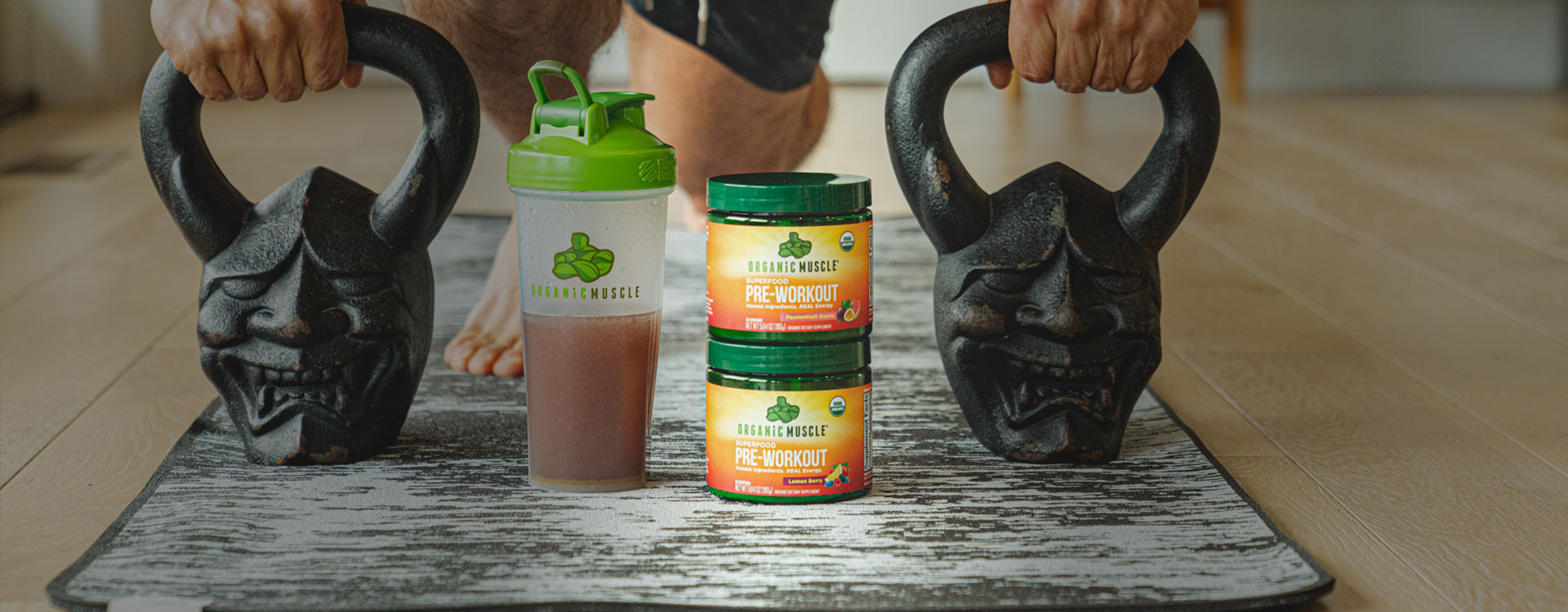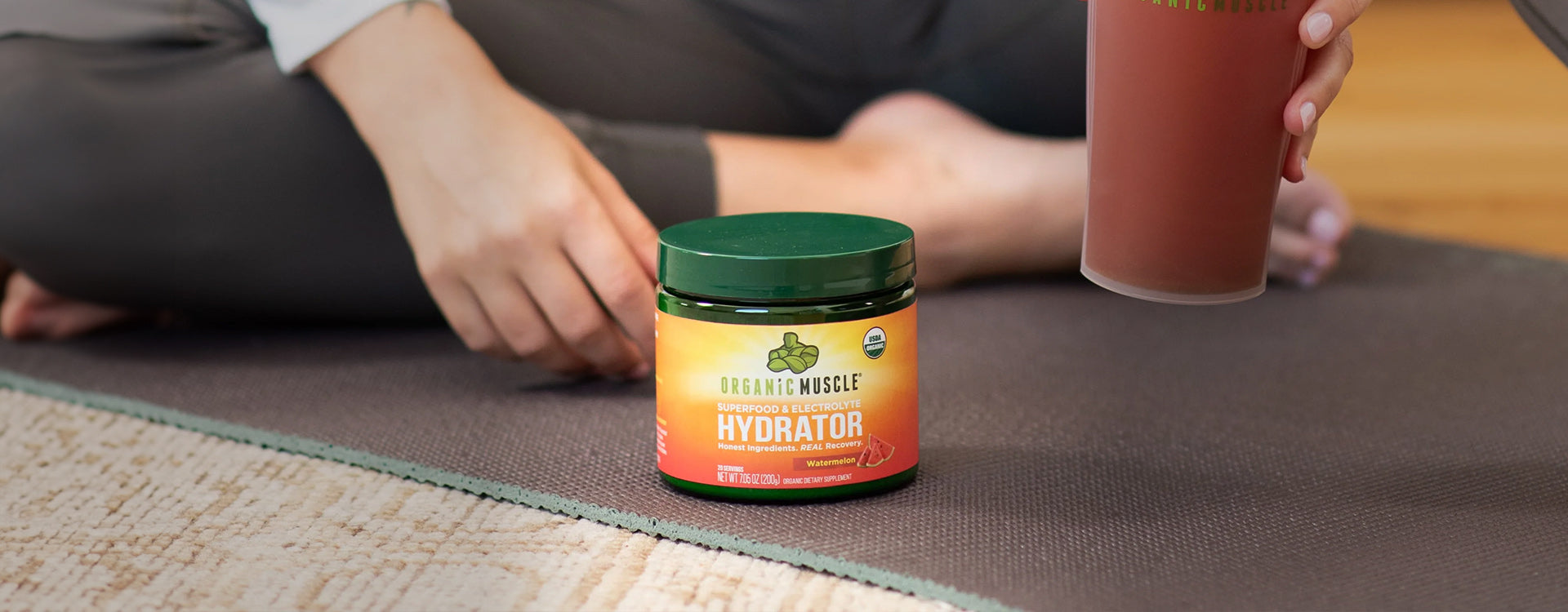Key Takeaways:
- Holistic Approach: Achieving strong, powerful legs requires a comprehensive approach that includes effective workouts, proper nutrition, and balanced supplementation.
- Effective Leg Workouts: Incorporate various leg exercises that target key muscle groups, including quadriceps, hamstrings, glutes, and calves, to ensure balanced development and prevent injuries.
- Importance of Compound and Isolation Exercises: Blend compound exercises like squats and deadlifts with isolation exercises like leg curls for optimal muscle activation, strength gains, and targeted muscle development.
Do your leg workouts leave you feeling underwhelmed? Maybe you've been hitting the squats, lunges, and deadlifts but still aren't seeing the powerful results you're after. Strong legs aren't just about looking good—they’re the pillars of your strength, balance, and overall fitness. If you're missing the key elements, it's like trying to build a mansion on shaky ground.
This article aims to guide fitness and health enthusiasts through a selection of the best leg workouts that promise to build power and strength in your legs and ensure a balanced, safe, and effective approach to fitness. Whether a beginner or an experienced lifter, these exercises will take your leg game to the next level. Let’s get started.
Understanding The Importance Of Effective Leg Workouts
Leg workouts are a crucial component of any fitness routine, helping you develop strength and overall body stability, endurance, and power. Strong legs support daily activities, enhance athletic performance, and promote long-term joint health. Here’s why effective leg workouts are so important:
Foundation of Strength:
- The legs are the body's foundation, providing stability and power for other movements.
- Strong legs are crucial for overall strength and athletic performance.
Improved Functional Fitness:
- Leg workouts enhance functional fitness, making everyday tasks easier and improving mobility.
- Activities like walking, running, climbing stairs, and carrying heavy objects benefit from strong legs.
Enhanced Athletic Performance:
- For athletes, strong legs are essential for success in sports that require power, speed, and endurance.
- Leg workouts can improve performance in various sports, including running, jumping, and soccer.
Reduced Risk of Injury:
- Strong legs help prevent injuries by providing stability and support for the joints.
- Weak legs can increase the risk of injuries, such as ankle sprains or knee problems.
Improved Posture:
- Strong legs can help maintain good posture, reducing strain on the back and other parts of the body.
- Proper posture is essential for overall health and well-being.
Key Muscle Groups Targeted By Leg Workouts
Leg workouts build lower body strength, improve balance, and enhance overall athletic performance. Understanding the primary muscle groups targeted during these exercises can help you design a more effective and balanced workout routine. Here’s a concise overview of the key muscle groups engaged through leg exercises:
Quadriceps
Located at the front of the thigh, the quadriceps are a group of four muscles. They are critical for extending the knee and play a significant role in walking, running, and nearly all lower-body movements. Exercises like squats, lunges, and leg press prominently work for this muscle group.
Hamstrings
The hamstrings are located at the back of the thigh opposite the quadriceps. They are primarily responsible for bending the knee and extending the hip. Strengthening the hamstrings is crucial for sprinters and anyone looking to improve their speed and agility. Deadlifts, hamstring curls, and glute-ham raises are excellent for targeting these muscles.
Glutes
The gluteal muscles comprise three main muscles: the gluteus maximus, gluteus medius, and gluteus minimus. Glute muscles are pivotal in hip extension, abduction, and rotation. Strong glutes can enhance power in your lower body, improving performance in almost all sports and activities. Hip thrusts, squats, and Bulgarian split squats are great exercises for strengthening the glutes.
Calves
The calf muscles, consisting of the gastrocnemius and soleus, are vital for pushing off during running and walking. They also assist in stabilizing the ankle and supporting overall leg function. Calf raises, whether seated or standing, can effectively isolate and strengthen these muscles.
How To Structure A Leg Workout Routine For Maximum Results
Understanding how to structure your routine is paramount when embarking on a journey to build powerful, strong legs through leg workouts. A well-designed leg workout routine not only maximizes strength and muscle gains but also ensures balanced development and minimizes the risk of injury. Below, find key components to include in your leg training program for the utmost efficacy and safety.
Begin with a Dynamic Warm-Up
A thorough warm-up prepares your muscles and joints for the strenuous activity ahead. Dynamic stretches and light cardio exercises, such as jogging or jumping jacks, can effectively increase blood flow and flexibility, thus enhancing your performance during the workout and reducing the risk of injuries.
Incorporate Compound and Isolation Exercises
Your leg workouts should include a blend of compound and isolation exercises for optimal results. Compound exercises, such as squats, deadlifts, and lunges, involve multiple muscle groups and joints, offering a more efficient way to build strength and muscle mass. On the other hand, isolation exercises, like leg curls and calf raises, target specific muscles, allowing for focused development and balance in muscle growth.
Balance Volume and Intensity
Volume (the total amount of work done, e.g., sets and reps) and intensity (how hard the exercises are, often quantified by the weight lifted) are critical factors in any workout routine. For leg workouts, a mix of high volume (e.g., 3-5 sets of 8-12 reps for growth) with moderate to high intensity ensures comprehensive muscle fatigue, a key driver of strength and muscle gains. However, it's important to listen to your body and adjust accordingly, aiming for progression over time without overtraining.
Prioritize Recovery
Adequate recovery, including rest days and proper nutrition, is vital for muscle repair and growth. Incorporating rest days into your routine allows your muscles to recover from training stress, making them stronger over time. Additionally, fueling your body with the right nutrients, especially proteins and essential vitamins and minerals, supports muscle recovery and growth.
Consistency
Lastly, consistency is key. Achieving significant results in leg strength and size requires regular and persistent effort. Stick to your routine, making adjustments as necessary based on progress and any changes in goals.
Why Compound Exercises Are Essential For Leg Strength
Incorporating compound exercises into your leg workouts is non-negotiable when it comes to building powerful, strong legs. Unlike isolation exercises that target a single muscle group, compound exercises engage multiple muscle groups simultaneously. This holistic approach optimizes your workout efficiency and simulates real-world movements and activities, enhancing functional strength.
Maximizing Muscle Activation
Compound exercises are renowned for their ability to maximize muscle activation. You're not just working your quads or hamstrings but engaging your glutes, calves, and even your core when performing movements such as squats or deadlifts. This comprehensive muscle engagement leads to greater strength gains and muscle growth throughout the lower body.
Boosting Metabolic Rate
Including compound movements in your leg workouts can significantly boost your metabolic rate. Because these exercises work multiple large muscles simultaneously, your body expends more energy during and after your workout, enhancing calorie burn and fat loss. This metabolic boost is an excellent advantage for anyone looking to improve body composition alongside building leg strength.
Enhancing Coordination and Balance
The multi-joint nature of compound exercises requires high coordination and balance. Regularly practicing these exercises improves your proprioception, or your body's ability to sense its position in space. This enhanced coordination translates to better performance in physical activities and a decreased risk of injuries by promoting joint stability and movement efficiency.
Elevating Functional Strength
Perhaps one of the most significant benefits of compound exercises for leg strength is improved functional strength. Functional strength refers to the ability to perform everyday activities with ease, whether that’s climbing stairs, carrying groceries, or sprinting to catch a bus. Compound exercises train your muscles to work together effectively, improving your quality of life through increased physical capabilities.
Best Squat Variations For Building Strong Legs
Squats are the cornerstone of any leg workout routine, celebrated for their unparalleled ability to strengthen the legs and lower body. Incorporating various squat variations into your fitness regime can enhance muscular power, stability, and endurance. Below are some of the most effective squat variations essential for building strong, powerful legs.
Barbell Back Squat
The barbell back squat is often hailed as the king of all leg exercises. It targets the quadriceps, hamstrings, glutes, lower back, and core muscles. To perform a back squat:
- Place the barbell on your upper back, gripping it wider than shoulder-width.
- Stand with your feet shoulder-width apart, toes pointing slightly outward.
- Keeping your back straight, lower yourself by bending at the knees and hips as if sitting back into a chair, until your thighs are parallel to the ground.
- Drive through your heels to return to the starting position.
Front Squat
Front squats shift the emphasis to the quadriceps and require significant core strength to maintain an upright torso.
- Position the barbell at chest height on the front of your shoulders.
- Cross your arms to hold the bar against your throat and shoulders, elbows pointing forward.
- Perform the squat by lowering your body until your thighs are parallel to the ground, then push back up to the starting position.
Sumo Squat
The sumo squat variation targets the inner thighs, glutes, and quadriceps with a wider stance.
- Stand with your feet wider than shoulder-width apart, toes pointing outwards.
- Holding a dumbbell or kettlebell in front of you, lower your body until your thighs are parallel to the floor.
- Push through your heels to return to the starting position.
Goblet Squat
The goblet squat is excellent for beginners to practice proper squat form, emphasizing the quads, hamstrings, and glutes.
- Hold a kettlebell or dumbbell close to your chest with both hands.
- With your feet shoulder-width apart and toes slightly turned out, lower your body into a squat.
- Ensure your elbows brush the insides of your knees as you descend.
- Push through your heels to stand back up to the starting position.
Split Squat
The split squat focuses on developing one leg at a time, improving balance and coordination.
- Stand in a staggered stance with one foot in front and the other extended behind you.
- Lower your body until your front thigh is parallel to the ground.
- Ensure your front knee does not go past your toes as you descend.
- Press back up to the starting position and repeat before switching legs.
Incorporating these squat variations into your leg workouts not only builds strength and power but also aids in injury prevention by ensuring balanced muscle development.
How To Incorporate Hamstring-Focused Workouts Into Your Routine
Here are some strategies for incorporating hamstring-focused workouts into your fitness regimen, ensuring your legs are aesthetically balanced, functionally strong, and healthy.
Start with a Proper Warm-Up
Begin with dynamic stretching and light cardio to increase blood flow to the leg muscles, including the hamstrings. A proper warm-up reduces the risk of injury and ensures that your muscles are ready for the workload ahead.
Include Both Compound and Isolation Exercises
Hamstring development benefits greatly from a mix of exercises that target multiple leg muscles simultaneously (compound exercises) as well as those that isolate the hamstrings.
- Compound Exercises: Movements like deadlifts and squats are foundational. For targeting the hamstrings more specifically, try incorporating variations such as the Romanian deadlift and the sumo deadlift. These exercises engage multiple muscle groups, providing a comprehensive leg workout that includes significant hamstring involvement.
- Isolation Exercises: Leg curls (lying, seated, or standing) are excellent for directly targeting the hamstrings, allowing for focused development. Utilizing gym equipment like a leg curl machine can facilitate effective isolation workouts.
Focus on Form and Mind-Muscle Connection
Achieving the best results requires not just performing exercises, but doing them correctly. Paying close attention to your form ensures you're engaging the right muscles without risking injury. Furthermore, developing a mind-muscle connection — consciously focusing on contracting the hamstrings during each exercise — can enhance the effectiveness of the workout.
Prioritize Progressive Overload
For continual hamstring development, it's essential to progressively increase the intensity of your workouts. This can be achieved by adding more weight, increasing the number of repetitions or sets, or incorporating more challenging variations of exercises over time.
Integrate Flexibility and Mobility Work
Strong hamstrings are flexible hamstrings. Incorporating stretching routines and mobility exercises for the hamstrings and the surrounding muscles can improve performance and reduce the risk of injury. Consider dedicating time for yoga or pilates sessions, which can complement your strength training regimen by enhancing flexibility and core strength.
Experiment with Frequency and Recovery
Finding the right balance in how often to train your hamstrings is key. While they need to be challenged regularly to grow stronger, adequate recovery time is equally important to prevent overtraining and to allow muscle repair and growth. Starting with hamstring-focused workouts 1-2 times a week, with at least 48 hours of recovery in between, is a good baseline. Adjust based on how your body responds and recovers.
The Role Of Isolation Exercises In Leg Workouts
Isolation exercises are pivotal in the pursuit of powerful, strong legs. They target individual muscles for improved tone, strength, and endurance. Unlike compound movements, which engage multiple muscle groups concurrently, isolation exercises allow for focused attention on a single muscle, enhancing the efficacy of your leg workouts. This focus is particularly beneficial for correcting muscle imbalances, rehabilitating injuries, and achieving specific aesthetic goals.
Enhancing Muscle Symmetry and Strength
One key benefit of incorporating isolation exercises into your leg workouts is the ability to develop muscle symmetry. By isolating and training each leg independently, you can address and rectify any disparities in strength or size, ensuring balanced muscular development. Such exercises are also instrumental in strengthening smaller muscle groups that might be neglected in compound movements, further contributing to overall leg strength and stability.
Rehabilitation and Prevention
Isolation exercises play an essential role in injury rehabilitation. By targeting specific muscles or muscle groups, these exercises can help restore strength and flexibility without placing undue stress on injured or vulnerable areas. Moreover, isolation exercises can aid in the prevention of future injuries by fortifying muscles around key joints, enhancing joint stability, and improving muscular control.
Complementing Compound Movements
While compound exercises are efficient for developing overall strength and mass, incorporating isolation exercises into your leg workouts ensures a comprehensive training regimen.
Isolation exercises complement compound movements by allowing for targeted muscle fatigue, leading to better endurance and the stimulation of muscle hypertrophy (growth). The strategic blend of these exercise types maximizes workout outcomes, ensuring both foundational strength and fine-tuned muscular development.
Organic Muscle and Your Leg Workouts
At Organic Muscle, we understand the importance of a holistic approach to fitness and health. Our range of Certified Organic, non-GMO, Vegan, Gluten-Free, Keto-Friendly, and Dairy-Free supplements is designed to support your body's needs during strenuous workouts and recovery.
Paired with a balanced regimen of compound and isolation exercises, our supplements can help you achieve your goals of having powerful, strong legs while ensuring your health and wellness are never compromised.
Tips For Avoiding Common Leg Workout Mistakes
When embarking on a journey to build powerful, strong legs, the enthusiasm to dive in can sometimes lead to overlooking the fundamentals that ensure efficacy and safety in your workouts. Here, we underline key strategies to sidestep common leg workout pitfalls, ensuring your path to robust lower body strength is both efficient and safe.
Neglecting Proper Warm-Up
Before diving into an intense leg workout, a proper warm-up is crucial. Dynamic stretches and light cardio exercises, such as jogging in place or jumping jacks, can prepare your muscles and joints for the rigors ahead, enhancing performance and reducing the risk of injuries.
Skipping Compound Movements
Compound exercises like squats, deadlifts, and lunges are paramount in any leg workout regimen. They target multiple muscle groups simultaneously and foster more considerable muscle activation. These movements also mimic real-world movements, translating to better functional strength.
Ignoring Flexibility and Mobility
While strength is vital to powerful legs, flexibility and mobility should not be understated. Incorporating stretching exercises and mobility work into your routine promotes a healthier range of movement, allowing for more effective workouts and diminishing the likelihood of strains or sprains.
Overlapping Similar Exercises
Variety is the spice of life and the essence of an effective workout routine. Avoid stacking exercises that target the same muscle groups back-to-back. This strategy helps prevent overuse injuries and ensures balanced development across all leg muscles.
Disregarding Form over Weight
The allure of lifting heavier weights can sometimes compromise form, leading to ineffective exercises or, worse, injuries. Always prioritize maintaining correct form over increasing weights. This approach guarantees the targeted muscles are engaged properly, optimizing growth and strength gains.
Forgetting to Rest
Muscle growth occurs during rest, not during workouts. Providing your legs ample time to recover between sessions is crucial to achieving strength and growth. Overtraining can lead to fatigue, decreased performance, and increased risk of injury.
Underestimating Nutrition and Hydration
Fueling your body with the right nutrients and staying hydrated are key components of a successful leg workout routine. Integrating a well-balanced diet rich in proteins, healthy fats, and carbohydrates and proper hydration supports muscle recovery and growth.
Final Thoughts
Incorporating these powerful leg workouts into your fitness routine can significantly improve your strength, power, and overall leg muscle development. Remember, achieving strong, well-defined legs is not solely about your exercises; it's also deeply connected to how you fuel and replenish your body.
At Organic Muscle, we understand the importance of complementing your leg workouts with high-quality, health-conscious supplements that support not just your physical endeavors but your entire wellness journey.
Our products offer the perfect synergy between fitness and nutrition, ensuring that your body receives the optimal ingredients it needs to thrive, recover, and grow stronger. Each of our supplements is designed with your health and safety in mind, adhering to our promise of certified organic, non-GMO, vegan, gluten-free, keto-friendly, dairy-free, and chemical-free products. Trust Organic Muscle to be your partner in achieving powerful, strong legs and embracing a holistic health and wellness lifestyle.
Read also:
- The Ultimate Guide To Vegan Diet For Athletes: What You Need To Know
- Vegan Bodybuilder Vs. Meat-Eating Bodybuilder: Key Differences
- How To Build Muscle On A Vegan Diet: Secrets From Top Plant-Based Athletes
Frequently Asked Questions About The Best Leg Workouts for Powerful, Strong Legs
How often should I train my legs each week?
To achieve powerful, strong legs, it is generally recommended that you train them 2 to 3 times per week. This frequency allows ample recovery between sessions while stimulating muscle growth and strength. Remember, recovery is as important as the workouts to prevent overtraining and ensure muscle growth.
Is it necessary to use weights for a powerful leg workout?
Weights can significantly enhance leg strength and muscle mass but aren’t strictly necessary for an effective leg workout. Bodyweight exercises, like squats, lunges, and step-ups, can be highly effective, especially when performed with high intensity or in circuit training. Incorporating resistance bands and plyometrics can also add variety and challenge your muscles in new ways.
What is the role of diet in building leg muscle?
Diet is crucial in building leg muscle and overall muscle growth and recovery. Consuming adequate protein is essential for muscle repair and growth, while carbohydrates provide the energy needed for your workouts. Healthy fats, including those involved in muscle growth, are also important for hormone regulation. Staying hydrated and ensuring your diet is balanced and complements your training regimen will support optimal results.
How long does it typically take to see results in leg strength?
Results can vary based on your starting point, workout intensity, frequency, and diet. Regular improvements in leg strength and muscle tone can be seen after 4 to 6 weeks of consistent, focused leg training. Tracking progress over time rather than expecting immediate changes is important, as building strength is a gradual process.
How can I prevent injury during leg workouts?
To prevent injury during leg workouts, start with a proper warm-up to prepare your muscles and joints for the exercises. Focus on maintaining good form throughout each exercise to ensure the correct muscles are engaged and to avoid unnecessary strain on joints and ligaments. Additionally, don’t forget to include rest days in your routine to allow your muscles time to recover and to prevent overuse injuries.
Can I build strong legs by working out at home?
Working out at home with minimal or no equipment can build strong legs. Bodyweight exercises, such as squats, lunges, and calf raises, can build leg strength. Using items found at home, like stairs for step-ups or a chair for Bulgarian split squats, can add variety and intensity. For those looking to increase resistance, adding household items like water jugs or investing in affordable equipment such as resistance bands can enhance your home leg workouts.
Sources:
- "Fitness Training: Elements of a Well-Rounded Routine." Mayo Clinic, Mayo Foundation for Medical Education and Research, 1 Dec. 2021, https://www.mayoclinic.org/healthy-lifestyle/fitness/in-depth/fitness-training/art-20044792.
- Ray, Nick. "Never Skip Leg Day: Benefits, Exercises, and Tips." Healthline, 21 June 2022, https://www.healthline.com/health/exercise-fitness/never-skip-leg-day.
|
Disclaimer: Organic Muscle products are not intended to treat, diagnose, mitigate, prevent, or cure disease. Organic Muscle products should not replace prescribed medications or the variety of foods important to a healthful diet. |













